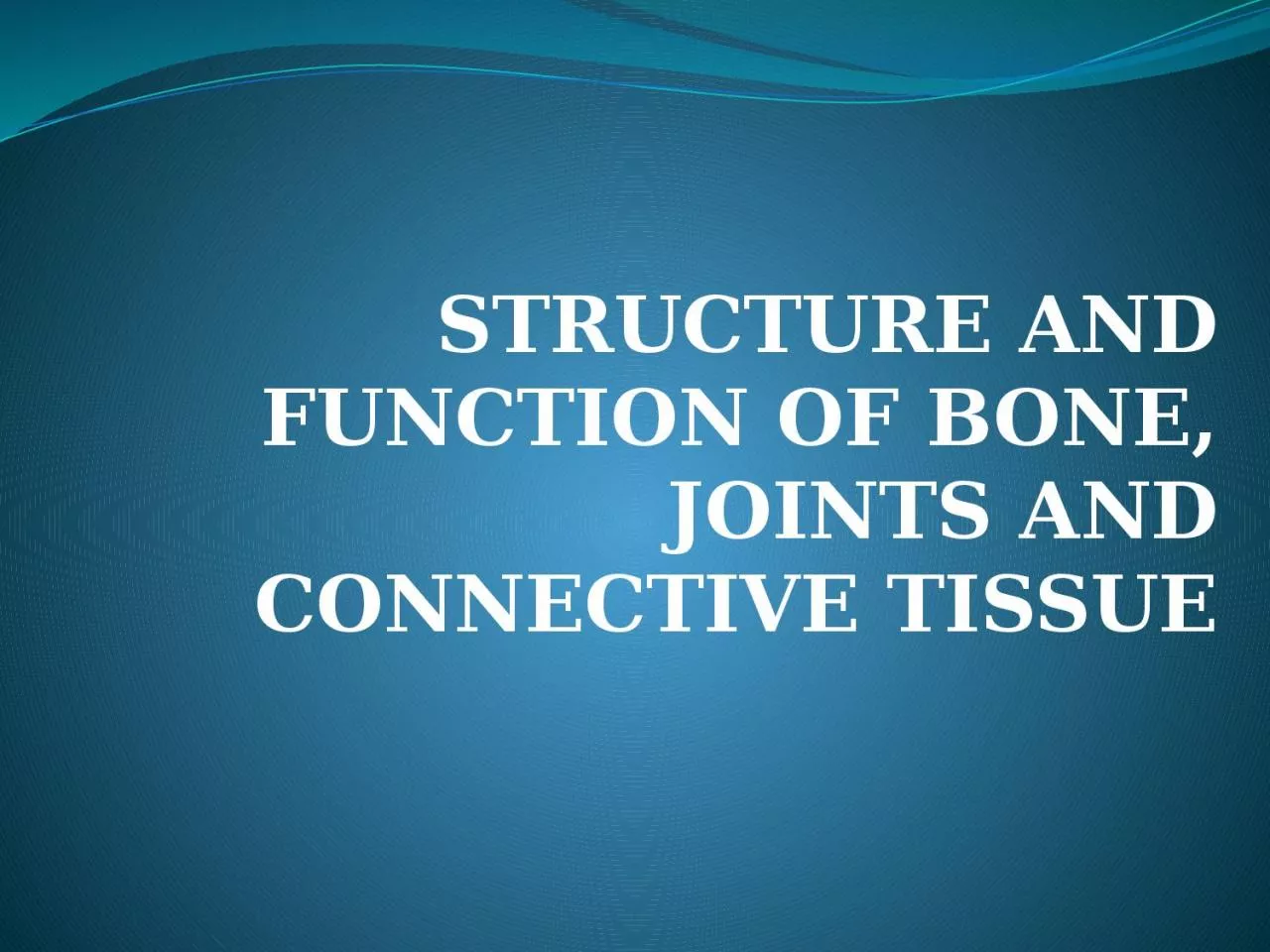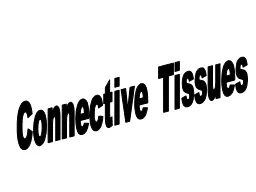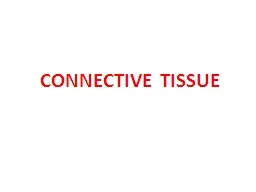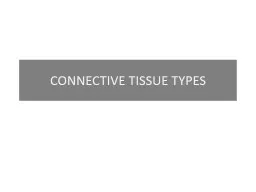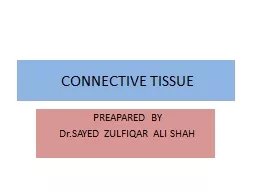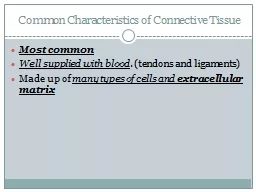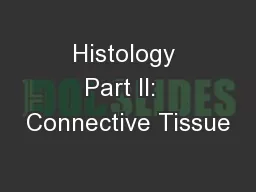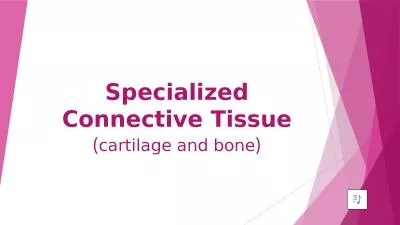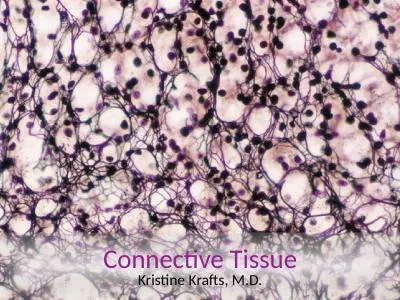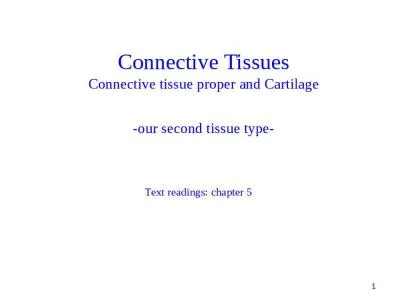PPT-STRUCTURE AND FUNCTION OF BONE, JOINTS AND CONNECTIVE TISSUE
Author : vivian | Published Date : 2022-06-18
CLASSIFICATION OF JOINTS Human joints provide the structures by which bones join with one another and may be classified according to the histologic features of
Presentation Embed Code
Download Presentation
Download Presentation The PPT/PDF document "STRUCTURE AND FUNCTION OF BONE, JOINTS A..." is the property of its rightful owner. Permission is granted to download and print the materials on this website for personal, non-commercial use only, and to display it on your personal computer provided you do not modify the materials and that you retain all copyright notices contained in the materials. By downloading content from our website, you accept the terms of this agreement.
STRUCTURE AND FUNCTION OF BONE, JOINTS AND CONNECTIVE TISSUE: Transcript
Download Rules Of Document
"STRUCTURE AND FUNCTION OF BONE, JOINTS AND CONNECTIVE TISSUE"The content belongs to its owner. You may download and print it for personal use, without modification, and keep all copyright notices. By downloading, you agree to these terms.
Related Documents

